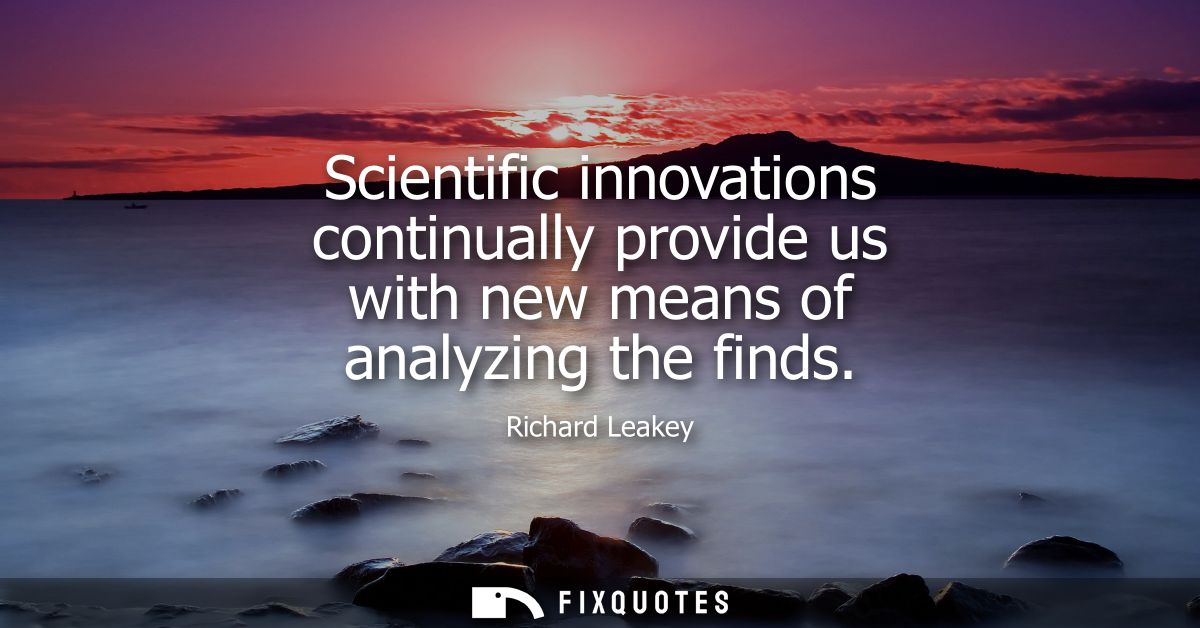"Scientific innovations continually provide us with new means of analyzing the finds"
About this Quote
Advancements in scientific techniques have fundamentally transformed how we understand the past, offering increasingly refined tools for investigating archaeological and paleontological discoveries. Over time, as technology progresses, new methods emerge that allow scientists to revisit prior finds with fresh perspectives. This iterative process means that objects unearthed decades ago can yield new information when examined using techniques that did not exist at the time of their discovery.
For instance, non-invasive imaging technologies such as computed tomography (CT) scanning and 3D modeling now enable researchers to study the internal structures of fossils and artifacts without causing damage. Isotope analysis provides insights into the diet, migration patterns, and environmental conditions surrounding ancient organisms and human populations. DNA sequencing, which was unimaginable in earlier decades, has unlocked the genetic secrets of long-extinct species, helping scientists reconstruct evolutionary relationships with remarkable accuracy.
Moreover, innovations in dating methodologies, such as more precise radiometric and luminescence dating, have improved chronologies, allowing us to place past events in a more accurate temporal framework. Digital databases and computational models facilitate the analysis of vast quantities of data, making it possible to identify subtle patterns and connections that would otherwise remain hidden.
These scientific developments do not just augment existing knowledge; they sometimes challenge established interpretations, prompting revisions of long-held theories about human origins, cultural evolution, or extinction events. As analytical capacities grow, the narrative of our past is continually reshaped, illustrating how each generation’s toolkit expands the boundaries of inquiry.
Ultimately, the ongoing cycle of technological innovation ensures that the process of discovery never truly ends. Every scientific breakthrough not only deepens our understanding of previous discoveries but also inspires new questions and approaches, underscoring the dynamic and evolving nature of the study of our origins and heritage.
About the Author

